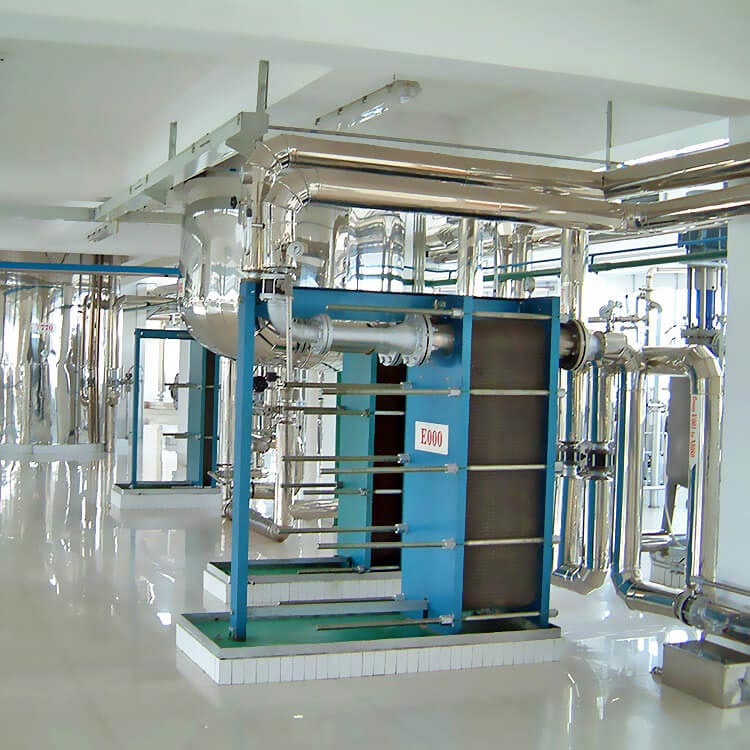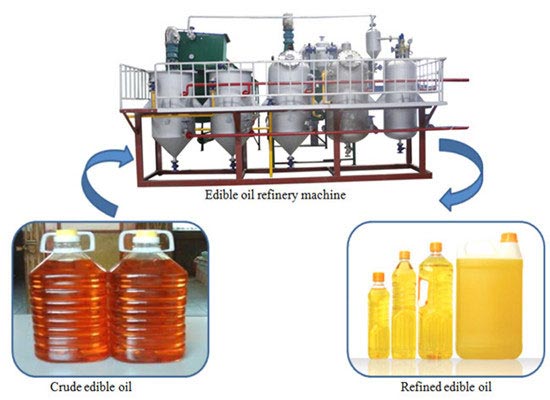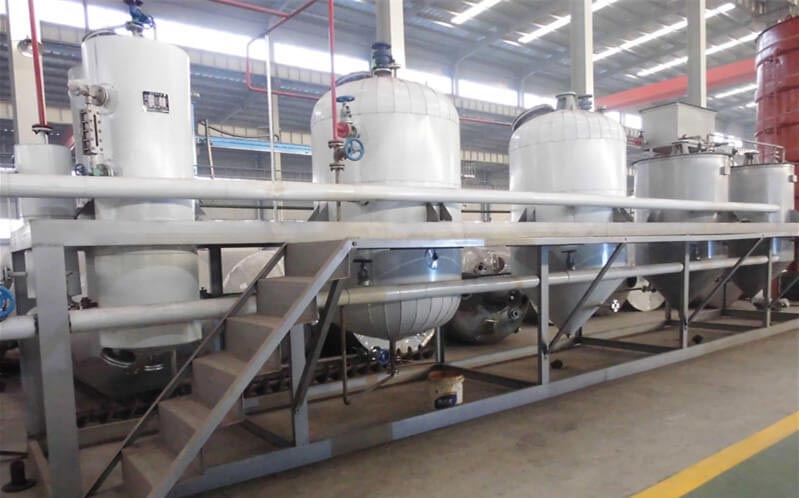
Overview
A refining pot, decolorizing pot, deodorizing pot, vacuum pump, steam generator, and heat conduction furnace are necessary for the edible oil refining process. They are connected with vessels by pipeline.
Features
Edible oil is indispensable in our daily lives, no matter what kind of food you make. Especially in China, we have accumulated thousands of years of diet culture, and edible oil quality will directly influence the food flavor. Thus high-quality edible oil is definitely important. It is said that edible oil without refinery is full of impurities such as gums, pigments, waxes, phosphatides, and free fatty acids (FFA), of which some are harmful to our health. Edible oil refining is essential to remove them and offer us the first or second-grade edible oil.

Actually, the edible oil refinery is classified as physical refining and chemical refining, and we will introduce the chemical refining method. The complete edible oil refining process is composed of the following sections which are Degumming, Neutralising, Bleaching, Deodorization, and Dewaxing.
This is also the pretreatment of the oil refinery. Degumming is to remove the phosphatides and mucilaginous material in crude oil. Phosphatides have strong hygroscopy and their existence is not good for edible oil storage, but it has high nutrition and wide application. The removal of phosphatides is an essential part of oil refining. This step adopts a hot water or alkali electrolyte solution. The phosphatides puff by absorbing water, then precipitate and separate out from the oil.
The second step is neutralization. It is to remove the Free Fatty Acids(FFA)by adding caustic soda. Thermic fluid oil is needed here to heat crude oil to about 60C. Then stir the crude oil, and the chemical reaction can create soap stock, which settles at the bottom of the tank and is taken out.

Neutralized oil now enters into the next vessel where the unpleasant color needs to be removed. During this step, we use bleaching earth which has strong adsorbability in high temperatures. The thermic fluid oil temperature should be up to 110 °C which ensures good adsorbability, and stirring is necessary too. The adsorbed residue and bleaching earth are filtered through the filter process.
The clean bleached oil is then drawn to the deodorizer to the last deodorization, to remove the volatile odoriferous material and free fatty acids. This step operates under a high vacuum. The oil is heated up to 110C and then live steam is piped, the oil temperature continuously rises to 200-220 °C. The smell is removed and the deodorized oil fluids are in a cooler to cool by circulating oil. Again, it should undergo a second time filtering, and then refined edible oil is obtained.
Copyright @ Henan Huatai Cereals And Oils Machinery Co.,Ltd.